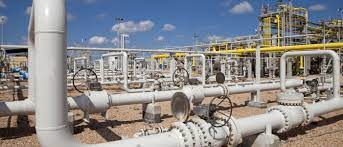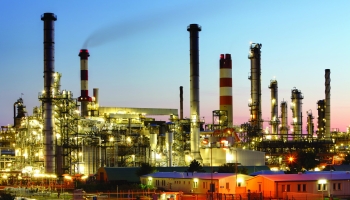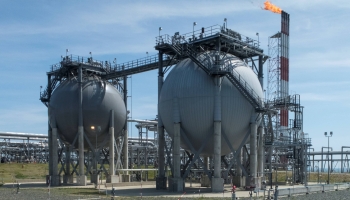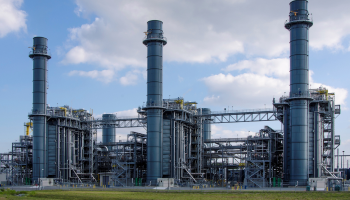Natural Gas Purification

A PSA (Pressure Swing Adsorption) based Natural Gas Upgradation Plant is a type of facility used to purify and upgrade raw natural gas. PSA technology is a well-established and widely used method for gas separation and purification. It is especially effective for removing impurities and contaminants from natural gas streams.
Here's how a PSA based Natural Gas Upgradation Plant typically works:
- Inlet Gas Compression: The raw natural gas is first compressed to increase its pressure, making it suitable for the adsorption process.
- Pre-treatment: Before entering the PSA unit, the gas is often pre-treated to remove any moisture, sulfur compounds, and other contaminants that could interfere with the adsorption process.
- PSA Adsorption Units: The heart of the plant is the PSA adsorption unit, which consists of several vessels filled with adsorbents. These adsorbents are usually materials like molecular sieves or activated carbon, which have a high affinity for certain gas molecules.
- Adsorption Cycle: The raw gas is passed through the adsorption vessels under high pressure. The adsorbents selectively capture and retain impurities and contaminants, allowing purified natural gas to pass through.
- Pressure Swing: After a specific period, known as the adsorption cycle, the pressure in the adsorption vessels is reduced, causing the adsorbents to release the captured impurities. The impurities are then vented from the system.
- Product Gas Stream: The purified natural gas is collected as the final product of the PSA process. This gas stream now has a significantly higher methane content and lower impurity levels, making it suitable for various applications such as fuel for power generation, vehicles, residential and industrial use, and feedstock for chemical processes.
- Regeneration: The adsorption vessels need to be regenerated after each adsorption cycle to remove the captured impurities fully. This regeneration process typically involves purging the vessels with a smaller stream of purified gas or another suitable gas to release the impurities from the adsorbents.
What are the benefits of Using PSA over other technologies?
Pressure Swing Adsorption (PSA) technology offers several benefits for natural gas upgradation when compared to other technologies:
- Energy Efficiency: PSA is generally more energy-efficient compared to other gas separation methods like cryogenic distillation. It operates at lower temperatures and pressures, reducing the energy consumption required for gas purification.
- Selective Adsorption: PSA can be designed with specific adsorbents to selectively remove target impurities from the natural gas stream. This allows for precise purification tailored to the gas composition and impurity profile.
- High Purity Levels: PSA can achieve high levels of purity in the upgraded natural gas, making it suitable for a wide range of applications, including power generation, industrial processes, and even vehicle fuel.
- Modular and Compact Design: PSA plants are often modular and can be scaled up or down based on demand. Their compact design requires less space compared to some other gas separation processes, making them suitable for various installation locations.
- Continuous Operation: PSA operates in cycles, allowing for continuous operation and a steady supply of purified natural gas without significant interruptions.
- Easy Operation and Automation: PSA units can be easily automated, requiring less manual intervention during regular operations. This results in reduced maintenance efforts and improved reliability.
- Reduced Environmental Impact: PSA technology is environmentally friendly as it does not use harmful chemicals or produce significant waste during the separation process. Moreover, the removal of impurities like sulfur compounds leads to lower emissions and reduced environmental impact of the upgraded gas.
- Quick Start-up and Shutdown: PSA units can be started and stopped relatively quickly, allowing for flexibility in responding to fluctuations in gas demand.
- Cost-Effective: PSA technology can be cost-effective, especially for upgrading smaller or remote natural gas sources, due to its modular design and lower energy requirements.
- Versatility: PSA can be adapted to handle a wide range of gas compositions and impurity levels, making it suitable for various natural gas sources with different characteristics.
What are the benefits of Using PSA over other technologies?
Pressure Swing Adsorption (PSA) technology offers several benefits for natural gas upgradation when compared to other technologies:
- Energy Efficiency: PSA is generally more energy-efficient compared to other gas separation methods like cryogenic distillation. It operates at lower temperatures and pressures, reducing the energy consumption required for gas purification.
- Selective Adsorption: PSA can be designed with specific adsorbents to selectively remove target impurities from the natural gas stream. This allows for precise purification tailored to the gas composition and impurity profile.
- High Purity Levels: PSA can achieve high levels of purity in the upgraded natural gas, making it suitable for a wide range of applications, including power generation, industrial processes, and even vehicle fuel.
- Modular and Compact Design: PSA plants are often modular and can be scaled up or down based on demand. Their compact design requires less space compared to some other gas separation processes, making them suitable for various installation locations.
- Continuous Operation: PSA operates in cycles, allowing for continuous operation and a steady supply of purified natural gas without significant interruptions.
- Easy Operation and Automation: PSA units can be easily automated, requiring less manual intervention during regular operations. This results in reduced maintenance efforts and improved reliability.
- Reduced Environmental Impact: PSA technology is environmentally friendly as it does not use harmful chemicals or produce significant waste during the separation process. Moreover, the removal of impurities like sulfur compounds leads to lower emissions and reduced environmental impact of the upgraded gas.
- Quick Start-up and Shutdown: PSA units can be started and stopped relatively quickly, allowing for flexibility in responding to fluctuations in gas demand.
- Cost-Effective: PSA technology can be cost-effective, especially for upgrading smaller or remote natural gas sources, due to its modular design and lower energy requirements.
- Versatility: PSA can be adapted to handle a wide range of gas compositions and impurity levels, making it suitable for various natural gas sources with different characteristics.
What Natural Gas Cleaning or Natural Gas Upgradation Technology is the best?
The choice of technology depends on factors such as the impurities present in the raw natural gas, the required purity level, and the intended end-use of the upgraded gas. Here are some of the main technologies used for natural gas upgradation:
- Pressure Swing Adsorption (PSA): PSA, as previously described, is a well-established technology for gas separation and purification. It is often used to remove impurities such as carbon dioxide, sulfur compounds, and water vapor from natural gas.
- Amine Gas Sweetening: This process uses liquid amine solutions to selectively absorb acidic gases like hydrogen sulfide (H2S) and carbon dioxide (CO2) from the natural gas stream. The amine solution is then regenerated to release the absorbed gases and produce purified natural gas.
- Membrane Separation: Membrane separation involves using semi-permeable membranes to separate gases based on their molecular size and permeability. It is commonly used to remove CO2 and other impurities from natural gas.
- Cryogenic Distillation: Cryogenic distillation is a process that utilizes low temperatures to liquefy and separate different components of natural gas based on their boiling points. This method is particularly effective for separating high concentrations of heavier hydrocarbons and impurities.
- Adsorbent Bed Technologies: Besides PSA, there are other adsorption-based technologies that use different types of adsorbents to capture specific impurities from natural gas streams.
- Refrigeration-Based Processes: These processes involve cooling the natural gas stream to condense and remove heavy hydrocarbons and other impurities.
- Hydrate Formation and Dissociation: This technique uses controlled conditions to form hydrates (solid ice-like compounds) that selectively capture certain impurities. By subsequently dissociating the hydrates, the impurities are removed, leaving purified natural gas.
- Organic Solvent-Based Processes: Some technologies use organic solvents to selectively absorb specific impurities from the gas stream.
- Biological Processes: Emerging technologies explore the use of microorganisms or bacteria that can consume specific impurities present in the natural gas stream, leading to purification.
It’s important to note that the choice of upgradation technology depends on the specific requirements and constraints of each gas processing facility.
What is the Future of Natural Gas Purification & Natural Gas Upgradation
The future of natural gas upgradation appears to be promising, albeit with some challenges and uncertainties. However, it’s important to note that the energy landscape is continually evolving, and developments might have occurred since my last update. Here are some key points to consider regarding the future of natural gas Purification:
- Environmental Concerns: One of the primary challenges facing the natural gas industry is its environmental impact, particularly related to methane emissions. Methane is a potent greenhouse gas, and its leakage during the extraction, production, and distribution processes can undermine the environmental benefits of using natural gas. As a result, there has been increasing pressure to minimize methane emissions and improve overall environmental performance.
- Carbon Capture and Utilization: Carbon capture and utilization (CCU) technologies are gaining attention as potential solutions to reduce the carbon footprint of natural gas. CCU involves capturing carbon dioxide (CO2) emissions and utilizing them in various industrial processes or products. Upgrading natural gas through CCU could help create a cleaner energy source while also reducing CO2 emissions.
- Renewable Gas: The concept of renewable gas, also known as green gas or biomethane, is gaining momentum. Renewable gas is produced from organic waste, agricultural residues, or other biogenic sources through processes like anaerobic digestion or gasification. Upgrading renewable gas can create a carbon-neutral or even carbon-negative energy source, which aligns with the growing focus on sustainable energy solutions.
- Hydrogen Production: Natural gas upgradation could play a role in hydrogen production. Hydrogen is increasingly seen as a potential clean energy carrier and a means to decarbonize various sectors, such as transportation and industrial processes. Upgrading natural gas to remove impurities and separate hydrogen could contribute to the growing hydrogen economy.
- Economic Factors: Economic trends and energy market dynamics will influence the future of Natural Gas Cleaning. The cost-effectiveness of upgradation technologies, as well as the competitiveness of natural gas compared to other energy sources, will shape investment decisions and industry growth.
- Policy and Regulations: Environmental policies and regulations will significantly impact the future of Natural Gas Cleaning. Stricter regulations on emissions and environmental performance could drive innovation in upgradation technologies and incentivize the adoption of cleaner gas sources.
Overall, the future of Natural Gas Purification will be shaped by a combination of environmental, economic, and policy factors. As the world transitions to a more sustainable and low-carbon energy system, technologies that can enhance the environmental performance of natural gas and enable its integration with renewable energy sources are likely to play a vital role.
It’s important to keep in mind that energy landscapes can change rapidly, and advancements in technology and shifts in energy policies can impact the outlook for Natural Gas Sweetening.
What are the ways in which people refer to Natural Gas Upgradation?
In the realm of energy and gas processing, Natural Gas Purification, also known as gas purification or gas conditioning, encompasses a diverse range of technologies employed to enhance the quality of raw natural gas. Among the widely recognized techniques is Pressure Swing Adsorption (PSA), a leading gas separation method renowned for its efficiency. Other common terms used to describe this process include gas sweetening, where acidic impurities are selectively removed, and CO2 removal from natural gas, targeting carbon dioxide content reduction. Additionally, individuals and industries might refer to this practice as methane upgradation techniques or even renewable gas production when producing eco-friendly biomethane from organic waste. The broad scope of natural gas upgradation enables an array of terminologies such as green gas technology, gas purification plant design, and hydrogen production from natural gas, which indicates the transformative potential of this field in the evolving energy landscape.




 Plot No.- C- 1, 39/3B & 39/8B, Phase- 3, Near Mazda Limited, Nana Chiloda Circle, G. I. D. C., Naroda, Ahmedabad – 382330, Gujarat, India.
Plot No.- C- 1, 39/3B & 39/8B, Phase- 3, Near Mazda Limited, Nana Chiloda Circle, G. I. D. C., Naroda, Ahmedabad – 382330, Gujarat, India.
 +(91) - 63587 68268
+(91) - 63587 68268